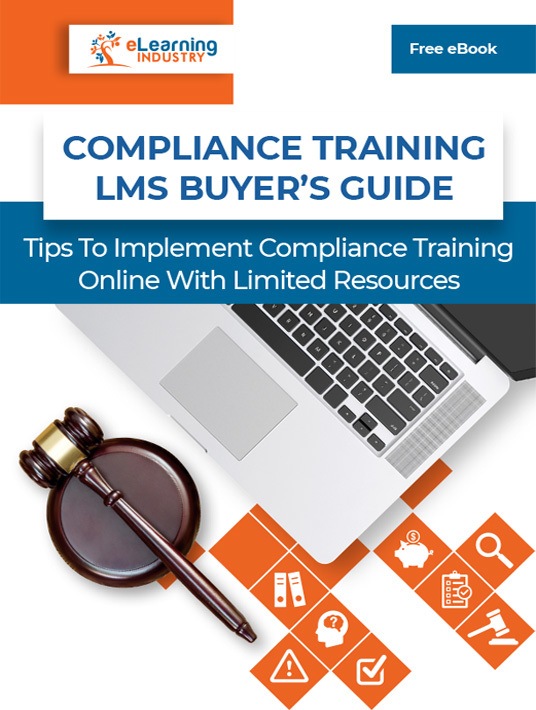Top Regulatory Compliance Training Must-Have Activities For Job-Related Risks
For many of us, compliance training is abstract. Yes, we can recite the policies, but they have no meaning. Unfortunately, this mindless approach to compliance regulations can cause financial and physical harm. Employees memorize the essential information so they’re able to pass the test. Then forget about it as soon as they leave the training room. How can we use regulatory compliance training to sink this message in and mitigate risks? Here are 6 regulatory compliance training must-haves to add to your compliance training LMS.

1. Task Simulations
Every gas station has that ‘no smoking’ sign, but we never really think about why. Similarly, we know we’re meant to turn off the ignition when we’re filling the tank. But until we see a gas station blowing up due to a random match, we may not really ‘get it’. Setting someone’s fuel depot on fire will get you arrested. But in a simulation, you can easily show that cause and effect. If you have the budget for it, use avatars that bear a strong resemblance to the employee training participant. You can even program in their voice. Then include haptic feedback and emotive ambient sounds. These will make the simulation more dramatic, so they’ll remember it better. The same principle can be applied to any simulated office task. It gives employees the chance to see how their actions tie into real-world consequences. For example, how not following the step-by-step task protocols causes an injury.
2. Decision-Making Scenarios
In the example above, your employee training participant had to make a series of choices. Let’s say they had to clean up a hazardous spill in the workplace. Which safety gear would they wear? Is there signage they need to put up to avoid customer injuries? What products should they use to deal with the toxins and avoid harming themselves? Program these selections into your task simulation. It helps them make better choices under pressure and shows them the direct results of their thought process. And it trains them to pick the right decisions for their work life.
3. Video Demos
Some of us learn best by watching others and imitating their moves. This isn’t always possible in work-settings. Especially for remote hires and satellite office branches. Consider recording a demo. It’s the next best thing because your employee training participants can pause, replay, slow down, or even freeze the sections they need. They can watch the demo at their own pace, compile queries, and forward them to the relevant department. These demos are especially important for high impact activities that involve gray areas. For instance, the video reenacts more subtle forms of sexual harassment so that employees know what it looks like in a real-world setting.
4. Real-World Examples
Lawyers are the primary players in regulatory compliance training policies. They look at given scenarios and craft technical legal guidelines that try to encompass every iteration. For example, in one verbose statement that has 73 sub-clauses, they may attempt to address every emergency scenario in the firm. And while the legalese can prevent lawsuits, it just befuddles your staff. So, after they’ve read all those run-on sentences, offer practical examples of what could happen. They’re largely what-if scenarios, but they do help with comprehension and knowledge retention. For example, tell them what could happen if they pick office cars without signing for them, then get into a crash.
5. Actual Samples
To bolster yourself, provide case studies in your compliance training LMS as well. Not just anecdotes and possibilities. Look for things backed by fact. Insurance companies are a good source for this kind of content. They’re sure to have the details, even if the names are redacted. It may be someone who got into an accident, became unconscious, and couldn’t be found for days. Why? Because nobody knew s/he had the office car, or where they were driving to. Or maybe they left their ‘uncool’ lanyard on their desks. So, the police and medics couldn’t identify them until they woke up in the hospital. You can even transform these case studies into animated video clips to drive the point home and engage employees. Animation lets you play out dangerous situations without putting anyone in harm’s way.
6. Contextual Interpretations
Possibly the most important aspect of mitigating work-place risks is context. Often, a staff member will fail to comply because they didn’t know better. And unfortunately, ignorance is not an accepted legal excuse. As you explain with examples and hypotheses, offer some ‘alternative facts’ that legal departments may derive. Medical cover for ‘immediate family’ may include your adopted child. But not distant family members. Or the office may fuel your car within work hours. But if you pick your child from a game after hours in a nearby town, they’re not reimbursing your gas. Or paying for repairs if your car breaks down on the way back. You can even provide personal anecdotes that stress the importance of compliance in the workplace.
Regulatory compliance training is a tricky subject. It aims to protect you from job-related risks, but with all the fine prints and oversight, it doesn’t always do so. If you want to get your staff properly invested in their training, ensure it has task simulations. Also, decision-making scenarios, video demos, real-world examples, actual samples, and contextual interpretations. Employee training participants see how those regulations really do affect their lives, and they’ll pay more attention. Which keeps them safe on the job and reduces the risk of costly penalties.
Have you ever wondered what compliance training is and how you can implement a compliance training LMS in your workplace without going over your budget? Download our eBook Compliance Training LMS Buyer's Guide: Tips To Implement Compliance Training Online With Limited Resources and discover how to cut costs, mitigate risks, train your employees, monitor their performance, and maintain your company’s high standards.

